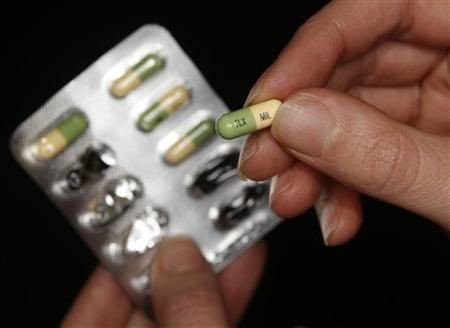Psychotropic Drug Use In Children Has Declined Since 2005; Why Behavioral Therapy May Be A Better Option

The number of children between the ages of 2 and 5 who are prescribed psychotropic medication has started to decline, after reaching its peak between 2002 and 2005. A report featured in the October issue of Pediatrics also concluded that boys, white children, and children from families without private insurance were most likely to receive psychotropic drugs.
"Our findings underscore the need to ensure that doctors of very young children who are diagnosing ADHD, the most common diagnosis, and prescribing stimulants, the most common psychotropic medications, are using the most up-to-date and stringent diagnostic criteria and clinical practice guidelines," said Tanya Froehlich, M.D., the study’s lead author from Cincinnati Children’s Hospital Medical Center/
Froehlich and her colleagues used the National Ambulatory Medical Care Survey (NAMCS) and the National Hospital Ambulatory Medical Care Survey (NHAMCS) for the basis of their study. Data was taken from 43,598 children between 2 and 5 years old to gauge the amount of visits in relation to psychotropic prescriptions.
Children receiving psychotropic drugs that treat attention deficit hyperactivity disorder (ADHD), mood disorder, anxiety, or mental health disorder dropped from 43 percent between 1994 and 1997 to 29 percent between 2006 and 2009. Researchers grouped psychotropic medication into seven categories including antidepressants, stimulants, mood stabilizers, antianxiety agents, and typical and atypical antipsychotics.
"The likelihood of receiving a behavioral diagnosis increased in 2006 to 2009, but this was not accompanied by an increased propensity toward psychotropic prescription," Froehlich added. "In fact, the likelihood of psychotropic use in 2006-2009 was half that of the 1994-1997 period among those with a behavioral diagnosis."
The 2004 “black box” suicide warning by the U.S. Food and Drug Administration (FDA), the 2005 public health advisory involving amphetamines and cardiovascular risk, and the 2006 FDA recommendation regarding psychostimulants and the risk of heart disease were all cited as reasons for this decline. The research team also recommended behavioral therapy as a healthier option than psychiatric medication like Ritalin or Adderall. Unlike drugs, behavioral therapy will not lead to a bevy of health concerns like weight loss, insomnia, loss of appetite, and mood swings.
“Given the continued use of psychotropic medications in very young children and concerns regarding their effects on the developing brain, future studies on the long-term effects of psychotropic medication use in this age group are essential," explained Froehlich.
A position paper published by the American Academy of Neurology back in March stated that prescribing ADHD medication to children to help them focus on schoolwork was “not justifiable.” The Centers for Disease Control and Prevention estimates that three million kids in the U.S. are prescribed some type of ADHD medication, making it the most prescribed drug in the country.
"The physician should talk to the child about the request, as it may reflect other medical, social or psychological motivations such as anxiety, depression or insomnia,” explained Dr. William Graf, the paper’s author. “There are alternatives to neuroenhancements available, including maintaining good sleep, nutrition, study habits and exercise regimens."
Source: Chirdkiatgumchai V, Xiao H, Frestrom B, Adams R, Epstein J, Froehlich T. National Trends in Psychotropic Medication Use in Young Children: 1994–2009. Pediatrics. 2013.
Published by Medicaldaily.com



























